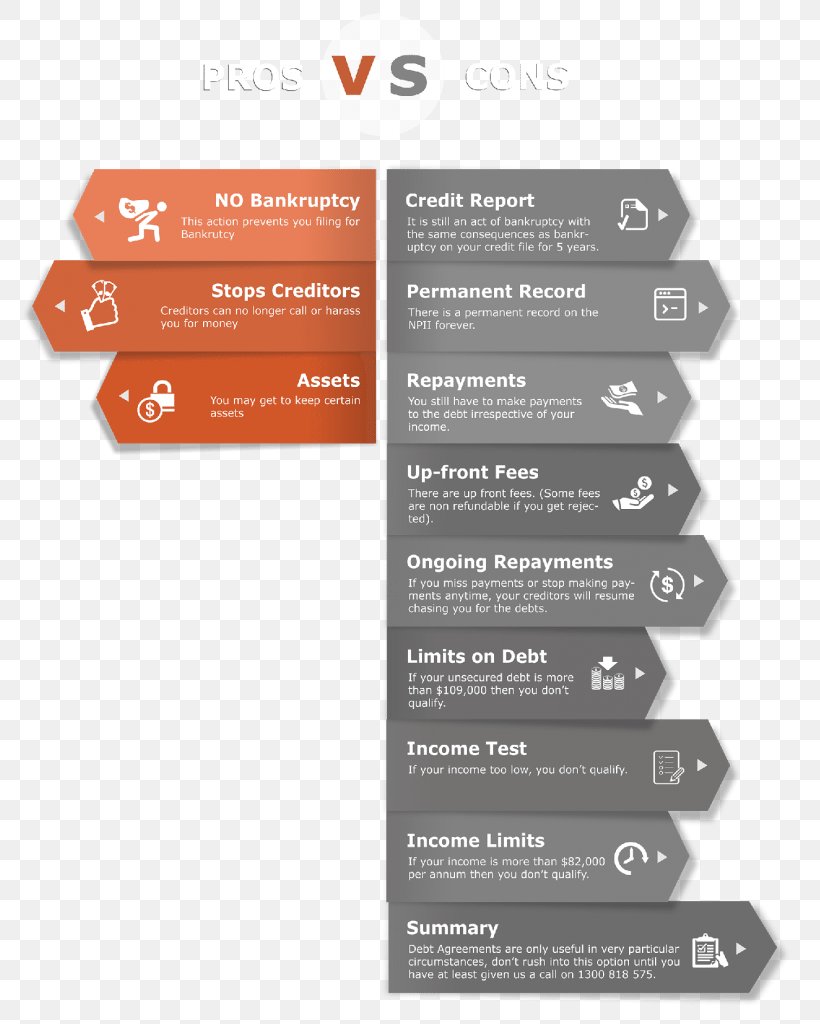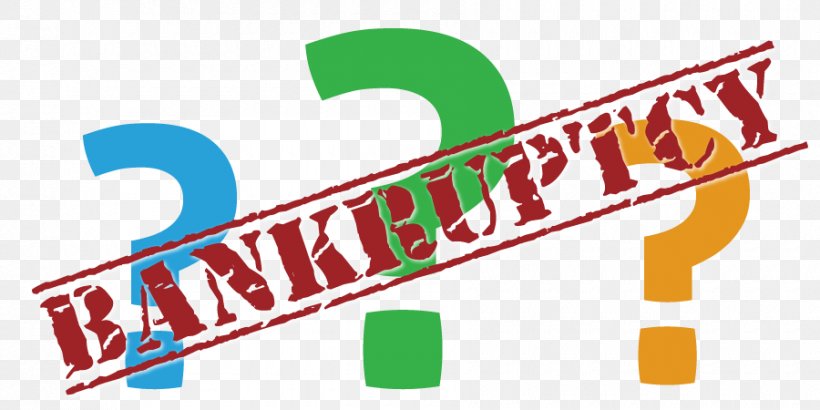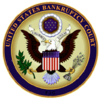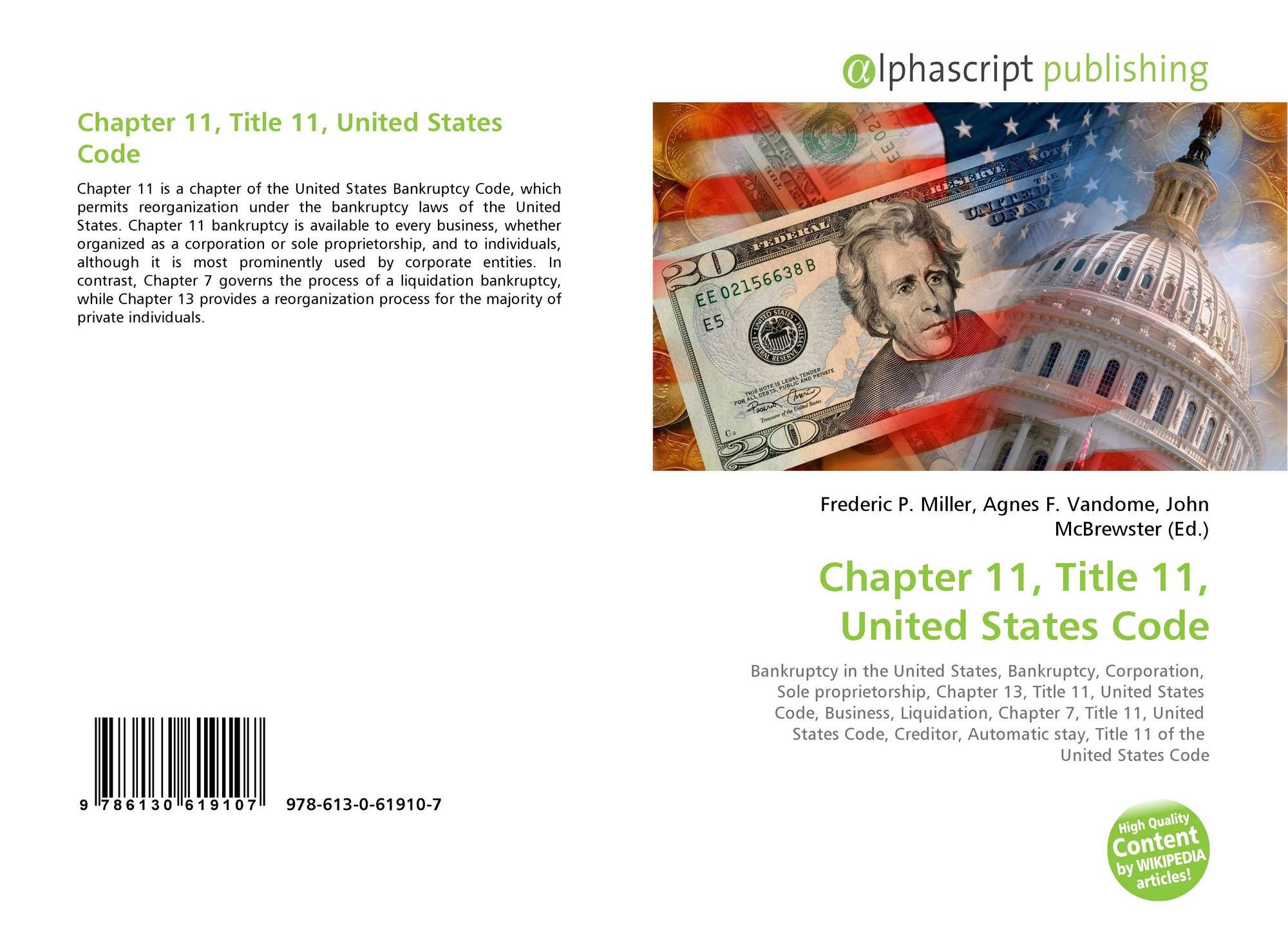Its principal chapters 7 11 12 13 and 15 are briefly outlined below. Chapter 7 is the most common form of bankruptcy in the United States.
 Personal Bankruptcy Chapter 7 Title 11 United States Code Chapter 13 Title 11 United States Code
Personal Bankruptcy Chapter 7 Title 11 United States Code Chapter 13 Title 11 United States Code
Although an individual chapter 7 case usually results in a discharge of debts the right to a discharge is not absolute and some types of debts are not discharged.

Chapter 7 title 11 united states code. If the business of the debtor is authorized to be operated file with the court with the United States trustee and with any governmental unit charged with responsibility for collection or determination of any tax arising out of such operation periodic reports and summaries of the operation of such business including a statement of receipts and disbursements and such other information as the United States. Chapter 7 Chapter 7 bankruptcy is a liquidation proceeding available to consumers and businesses. The court appoints a trustee who may or may not be a part of the company to oversee the liquidation process.
Chapter 7 Title 11 United States Code. Chapter 7 Title 11 United States Code. CHAPTER 7LIQUIDATION sections 701 to 784.
Chapter 7 bankruptcy involves liquidation of the debtors assets to provide lump sum payments usually pennies on the dollar to creditors. 1098 title I 102 k title VII 719 b 2 title IX 907 p 2 Apr. In the United States a type of bankruptcy where a persons or companys assets are required to be liquidated.
35 133 182 added items 753 and 767 substituted Dismissal of a case or conversion to a case under chapter 11 or 13 for Dismissal in item 707 and struck out item 728 Special tax. Chapter 7 of Title 11 of the United States Code Bankruptcy Code governs the process of liquidation under the bankruptcy laws of the United States in contrast to Chapters 11 and 13 which govern the process of reorganization of a debtor. Charged with crime did not commit.
A No Asset Report simply means that in hisher determination the trustee concludes that there are no assets from which any creditors may be repaid. Chapter 7 of the Title 11 of the United States Code Bankruptcy Code governs the process of liquidation under the bankruptcy laws of the United States in contrast Chapters 11 and 13 govern the process of reorganization of a debtor in bankruptcy. In contrast Chapters 11 and 13 govern the process of reorganization of a debtor in bankruptcy Chapter 7 is the most common form of bankruptcy in the United States.
Chapter 7 is the most common form of bankruptcy in the United States. Chapter 7 of Title 11 of the United States Code Bankruptcy Code governs the process of liquidation under the bankruptcy laws of the United States in contrast to Chapters 11 and 13 which govern the process of reorganization of a debtor. Chapter 7 of the Title 11 of the United States Code Bankruptcy Code governs the process of liquidation under the bankruptcy laws of the United States.
Charged with crime statement. Chapter 7 is the most common form of bankruptcy in the United States. Charged with abetting bigamy.
Charge des affaires or charge daffaires. If a company files for chapter 7 it ceases operations. Chapter 7 of Title 11 of the United States Code Bankruptcy Code governs the process of liquidation under the bankruptcy laws of the United States in contrast to Chapters 11 and 13 which govern the process of reorganization of a debtor.
Chapter 7 of the Title 11 of the United States Code Bankruptcy Code governs the process of liquidation under the bankruptcy laws of the United States. In a chapter 7 case however a discharge is only available to individual debtors not to partnerships or corporations. Charged for phone service never received.
The Bankruptcy Code appears in title 11 of the United States Code beginning at 11 USC. 20 2005 119 Stat. Chapter 7 is the most common form of bankruptcy in the United States.
The primary difference between Chapter 13 bankruptcy and Chapter 7 bankruptcy is that Chapter 13 is a reorganization of the debtors finances to pay down liabilities over time according to a repayment plan. Chapter 7 of Title 11 of the United States Code governs the process of liquidation under the bankruptcy laws of the United States in contrast to Chapters 11 and 13 which govern the process of reorganization of a debtor. In a Chapter 7 if the trustee is satisfied that after applying the debtors exemptions there are no assets to satisfy the creditors the trustee will then issue a No Asset Report to the bankruptcy court judge.
Charged for being drunk assault.
 Claim In Bankruptcy Chapter 7 Title 11 United States Code Cause Of Action Chapter 11 Title 11 United States Code Claim In Bankruptcy Angle Text Payment Png Pngwing
Claim In Bankruptcy Chapter 7 Title 11 United States Code Cause Of Action Chapter 11 Title 11 United States Code Claim In Bankruptcy Angle Text Payment Png Pngwing
 Bankruptcy Costs Of Debt Bankruptcy Costs Of Debt Chapter 7 Title 11 United States Code Creditor
Bankruptcy Costs Of Debt Bankruptcy Costs Of Debt Chapter 7 Title 11 United States Code Creditor
![]() Employment Icon Salary Icon Money Icon Png Clipart Bankruptcy Chapter 7 Title 11 United States Code
Employment Icon Salary Icon Money Icon Png Clipart Bankruptcy Chapter 7 Title 11 United States Code
 Personal Bankruptcy Chapter 7 Title 11 United States Code Trustee In Bankruptcy Insolvency Bankrupt Text Contract Png Pngegg
Personal Bankruptcy Chapter 7 Title 11 United States Code Trustee In Bankruptcy Insolvency Bankrupt Text Contract Png Pngegg
 Chapter 7 Title 11 United States Code Wikipedia
Chapter 7 Title 11 United States Code Wikipedia
 Claim In Bankruptcy Protected Trust Deed Scotland Chapter 7 Title 11 United States Code Marker Stroke Text Heart Map Png Pngwing
Claim In Bankruptcy Protected Trust Deed Scotland Chapter 7 Title 11 United States Code Marker Stroke Text Heart Map Png Pngwing
 What Is Chapter 7 Title 11 United States Code Alice Law
What Is Chapter 7 Title 11 United States Code Alice Law
 Chapter 13 Title 11 United States Code Number Chapter 7 Title 11 United States Code Bankruptcy Chapter 12 Title 11 United States Code Others Miscellaneous Purple Number Png Klipartz
Chapter 13 Title 11 United States Code Number Chapter 7 Title 11 United States Code Bankruptcy Chapter 12 Title 11 United States Code Others Miscellaneous Purple Number Png Klipartz
 Bankruptcy Remote Chapter 7 Title 11 United States Code Chapter 13 Title 11 United States Code
Bankruptcy Remote Chapter 7 Title 11 United States Code Chapter 13 Title 11 United States Code
 Bankruptcy Lawyer Donor S Bill Of Rights Legal Advice Chapter 9 Title 11 United States Code Yes We Can Png Pngegg
Bankruptcy Lawyer Donor S Bill Of Rights Legal Advice Chapter 9 Title 11 United States Code Yes We Can Png Pngegg
 Web Page Bankruptcy Online Advertising Breaking Free Chapter 7 Title 11 United States Code Agar Ska N Text Media Advertising Png Pngwing
Web Page Bankruptcy Online Advertising Breaking Free Chapter 7 Title 11 United States Code Agar Ska N Text Media Advertising Png Pngwing
 Ppt Bankruptcy Reorganization Powerpoint Presentation Free Download Id 1633156
Ppt Bankruptcy Reorganization Powerpoint Presentation Free Download Id 1633156
 Chapter 12 Title 11 United States Code Chapter 13 Title 11 United States Code Chapter 7
Chapter 12 Title 11 United States Code Chapter 13 Title 11 United States Code Chapter 7
 Chapter 11 Title 11 United States Code 978 613 0 61910 7 6130619103 9786130619107
Chapter 11 Title 11 United States Code 978 613 0 61910 7 6130619103 9786130619107

No comments:
Post a Comment
Note: only a member of this blog may post a comment.